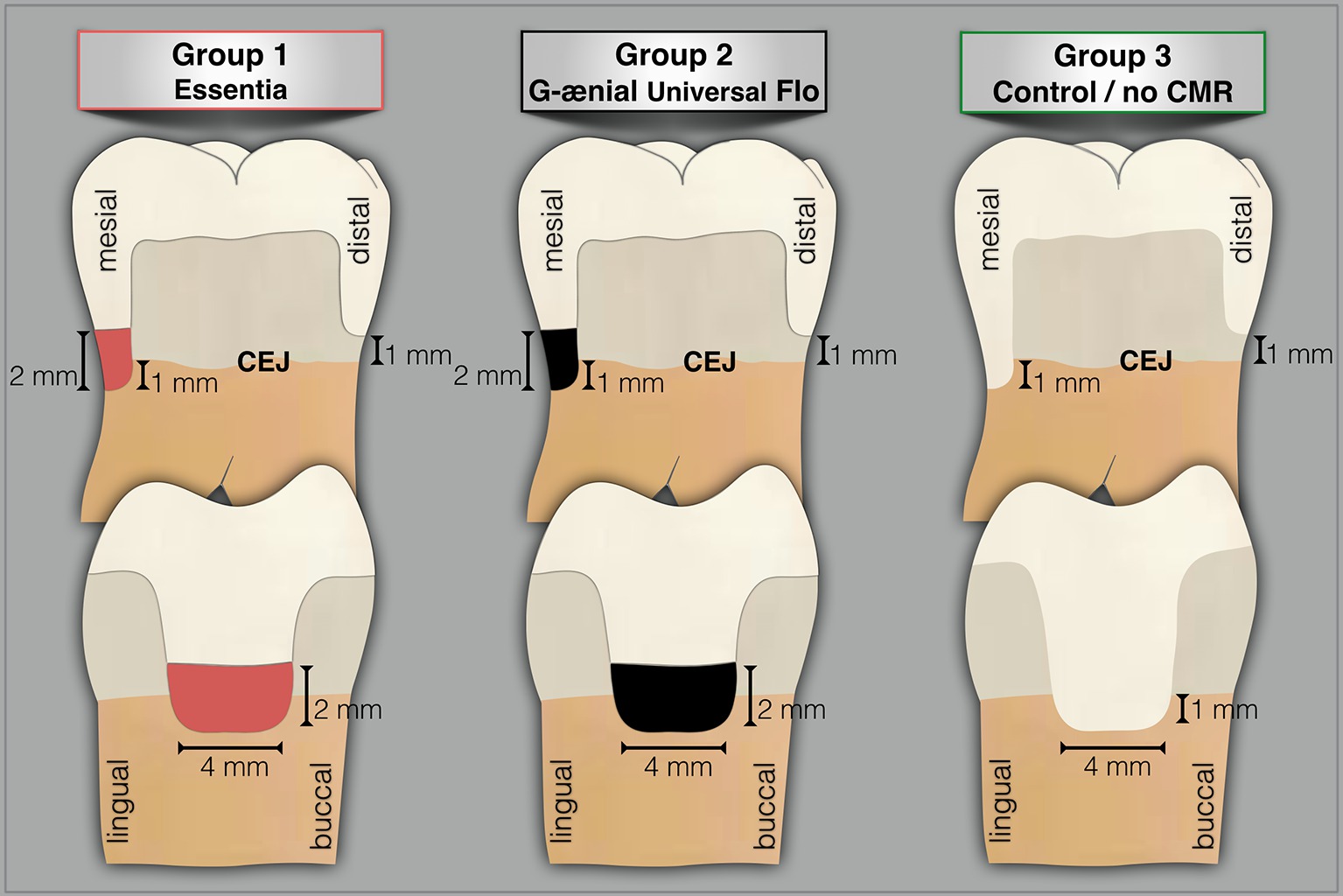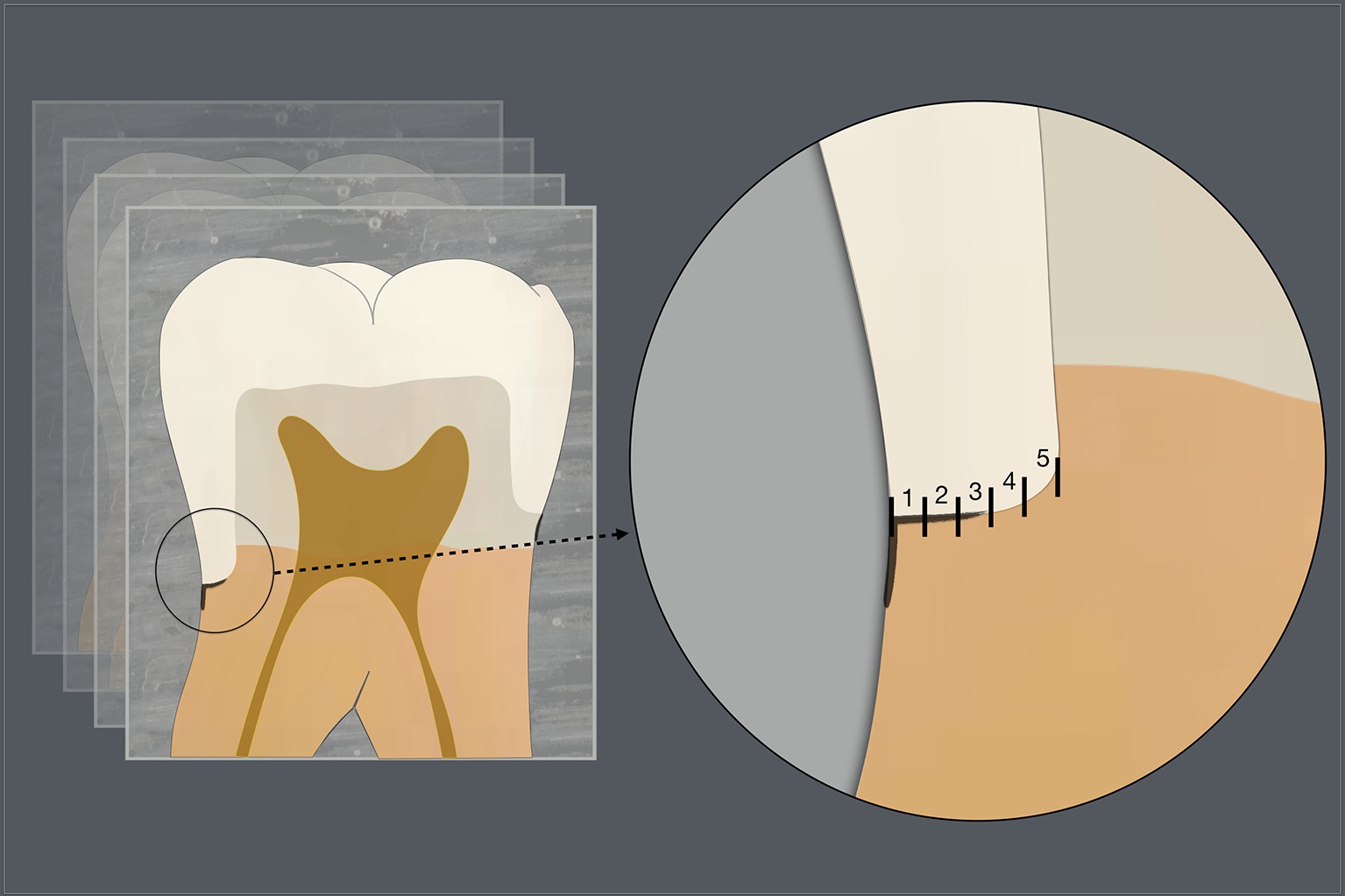IADR Abstract Archives
Marginal Seal of Relocated Cervical Margins of MOD Overlays
Objectives: The aim of this in vitro study was to evaluate the effect of the cervical marginal relocation (CMR) on marginal seal performed with two different viscosity resin composites prior to adhesive cementation of composite CAD/CAM MOD overlays. The null hypotheses tested were that 1. no differences exist in marginal seal when flowable or hybrid resin composite are used for CMR and 2. no differences exist in marginal seal of MOD overlay between enamel and dentin margin.
Methods: Standardized MOD cavities were prepared in 39 human molars and randomly assigned to one of three experimental groups (n = 13). The proximal margins in mesial side were located 1 mm below cemento-enamel junction (CEJ), whereas on the distal side of the tooth the margins were located 1 mm above CEJ. In group 1 a hybrid composite GC Essentia MD and in group 2 a flowable composite GC G-ænial Universal Flo were used in two increments of 1-mm thickness for CMR technique where as in group 3 mesial proximal box left untreated. Composite CAD/CAM overlays were adhesively cemented on all groups and marginal leakage evaluation was performed with ammoniacal silver nitrate penetration.
Results: Statically significant differences were observed in nanoleakage along the dentin-bonding interfaces among 3 groups (Kruskal-Wallis, p=0.000). No statistically significant difference in leakage scores were present at the dentin/CMR composite interface between two tested composites (p=0.279, Mann-Whitney U), whereas the control group (group 3) showed significantly less nanoleakage. Significantly higher leakage scores were recorded at dentin interface then at the enamel interface.
Conclusions: The results of the present study support the hypothesis that flowable and microhybrid resin composite show comparable performance when used for CMR, in terms of marginal sealing ability.
Methods: Standardized MOD cavities were prepared in 39 human molars and randomly assigned to one of three experimental groups (n = 13). The proximal margins in mesial side were located 1 mm below cemento-enamel junction (CEJ), whereas on the distal side of the tooth the margins were located 1 mm above CEJ. In group 1 a hybrid composite GC Essentia MD and in group 2 a flowable composite GC G-ænial Universal Flo were used in two increments of 1-mm thickness for CMR technique where as in group 3 mesial proximal box left untreated. Composite CAD/CAM overlays were adhesively cemented on all groups and marginal leakage evaluation was performed with ammoniacal silver nitrate penetration.
Results: Statically significant differences were observed in nanoleakage along the dentin-bonding interfaces among 3 groups (Kruskal-Wallis, p=0.000). No statistically significant difference in leakage scores were present at the dentin/CMR composite interface between two tested composites (p=0.279, Mann-Whitney U), whereas the control group (group 3) showed significantly less nanoleakage. Significantly higher leakage scores were recorded at dentin interface then at the enamel interface.
Conclusions: The results of the present study support the hypothesis that flowable and microhybrid resin composite show comparable performance when used for CMR, in terms of marginal sealing ability.



